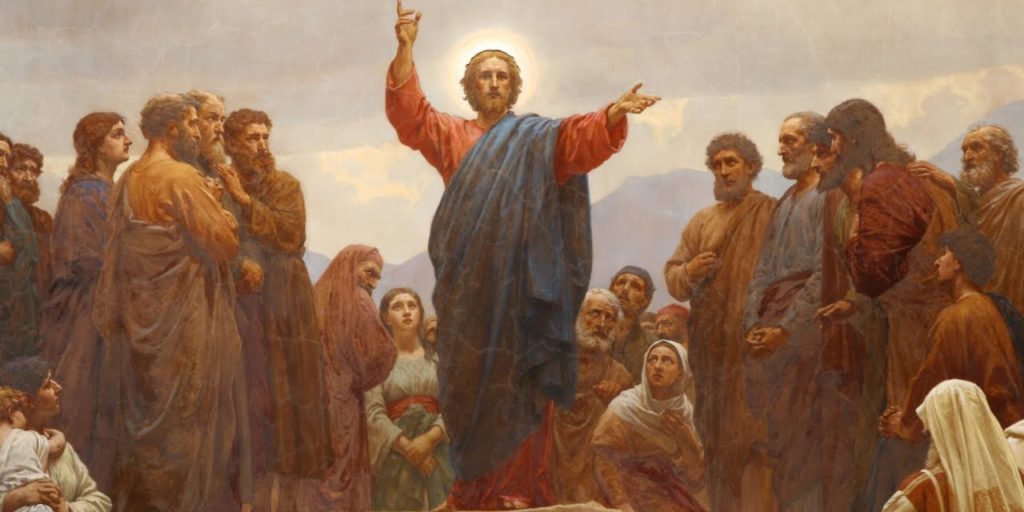
“Go and do Likewise”: The Continuing Relevance of Jesus’s Parables
This is part one of David Gowler’s analysis of Jesus’s parables. Click the link to read part two: “The Domestication of Jesus’s Parables”
How can the parables of Jesus be relevant for the church today? The answer, at first, seems simple: One should strive to understand the meanings of parables in the contexts of Jesus’s life and ministry and then, in the words of Klyne Snodgrass, “appropriate” Jesus’s messages in the parables in our current contexts for “people who are ready to learn and follow his instruction.”
The challenge we face in interpreting the parables thus involves “modernizing” the message of Jesus authentically—making it relevant for contemporary society—without anachronizing or domesticating his message. Click To Tweet That’s easier said than done. For example, when interpreting ancient literature, such “appropriation” can be fraught with difficulties because of the vast differences, in the case of the parables, between first-century Mediterranean and twenty-first century cultures. Many social and cultural assumptions in ancient texts, for instance, are incomprehensible to most modern readers (e.g., honor/shame), and other differences can be problematic to navigate (e.g., views on slavery, roles of women).
A critical concern, as Henry Cadbury stated, is the tendency to “modernize” Jesus, where modern interpreters, in effect, construct teachings of Jesus that are conducive to their own preconceived worldviews. The challenge we face in interpreting the parables thus involves “modernizing” the message of Jesus authentically—making it relevant for contemporary society—without anachronizing or domesticating his message.
One way to understand better what parables mean is to explore how parables work, how they produce meaning, and the ways in which they seek to communicate and persuade. A critical component, as the novelist Octavia Butler put it, is that parables are effective “teaching tools” because they create “pictures in people’s minds,” a view reminiscent of C. H. Dodd’s thesis that Jesus’s parables “are the natural expression of the mind that sees truth in concrete pictures rather than conceives it in abstractions.”
How are we to understand the “pictures” these ancient parables create in the minds of today’s hearers? Dodd insists that parables retain their imaginative and poetical quality:
“They are works of art, and any serious work of art has significance beyond its original occasion . . . Their teaching may be fruitfully applied and re-applied to all sorts of new situations which were never contemplated at the time when they were spoken. But a just understanding of their original import in relation to a particular situation in the past will put us on right lines in applying them to our new situations.”
As Snodgrass correctly argues, parables mostly focus on humans, mirror the commonness of first-century Palestinian life, attempt to persuade their audiences, and their main purpose “is to goad people into response.” So, for me, the most important aspect of parable interpretation is to explore what parables want of us. Parables make demands on their hearers/readers; they have ethical implications. Their goal is not just to persuade people to see the world, God, themselves, and other human beings in strikingly new ways; parables also demand that their hearers/readers respond by putting those new or changed perceptions into practice in concrete ways in their everyday lives.
Jesus’s parables, these simple but profound stories, continue to challenge us, and the following key examples—each one leading to the other, and each one becoming more difficult to put into practice—will demonstrate how Jesus’s parables can and should be relevant today.
The Prodigal Son
James Weldon Johnson’s poem, “The Prodigal Son,” illustrates how the parable usually has been interpreted over the centuries:
But Jesus spake in a parable, and he said:
A certain man had two sons.
Jesus didn’t give this man a name,
But his name is God Almighty.
And Jesus didn’t call these sons by name,
But ev’ry young man,
Ev’rywhere,
Is one of these two sons.
So, for me, the most important aspect of parable interpretation is to explore what parables want of us. Parables make demands on their hearers/readers; they have ethical implications. Click To Tweet The history of interpretation verifies Johnson’s observations, because multitudes have identified with the younger brother, others with the older brother, and, perhaps, both brothers at different stages of their lives. As important as those interpretations are in which people identify with one or two of the brothers, does the parable demand more from us?
For Henri Nouwen, the parable reflects developmental stages in one’s spiritual journey. The first phase is identification with the younger son’s sinning, repentance, and returning to God. The second phase is identifying as the elder son and deciding to welcome home one’s repentant brothers and sisters. The third and final phase is the main message of the parable: “Whether you are the younger son or the elder son, you have to realize that you are called to become the father.”
This parable, then, urges its hearers to become like the loving, forgiving, and always-welcoming father—not an easy process, and a demand that has further implications.
The Good Samaritan
The attributes of the loving father in the Prodigal Son parable are echoed in the similar portrayal of the Samaritan in the parable of the Good Samaritan. The impetus for Jesus telling the parable comes in an exchange with an expert in Jewish law. The lawyer asks Jesus, “What must I do to inherit eternal life?” and, after Jesus responds by asking him what he had read in the law, the lawyer supplies the answer: Love God and one’s neighbor.
This parable, in a number of ways, breaks down prejudices, shatters stereotypes, and demonstrates how we are to treat each other. Click To Tweet When Jesus responds that he had given the correct answer, the lawyer then asks Jesus, “And who is my neighbor?” Jesus replies with a parable that describes the extraordinary actions of a man, a hated Samaritan, who assists another human being in need, a man half dead by the side of the road who had already been ignored by two religious people who saw the man but did not stop to help. The Samaritan, in contrast, has compassion for the man, treats the man’s wounds, brings him to an inn, takes care of him, and then pays the innkeeper to take care of the man in his absence.
This parable of a despised Samaritan demonstrating what it means to love one’s neighbor makes an important and radical transition in the definition of neighbor, one with deep roots in Jesus’s Jewish tradition. The lawyer cited Leviticus 19:18b, “you shall love your neighbor as yourself: I am the Lord.” The parable that Jesus tells, however, emphasizes a key passage that comes just a few verses later, in Leviticus 19:34b-c, “you shall love the alien as yourself . . . . I am the Lord your God,” a move that expands one’s understanding of neighbor to the “alien”—an immigrant, stranger, or other perceived opponent.
The parable thus demolishes any distinction between neighbor and the “other” in a way that honors the juxtaposition of “you shall love your neighbor as yourself”—quoted by the lawyer and affirmed by Jesus—and the “you shall love the alien as yourself.” The alien, the “other,” is also one’s neighbor that one must love as oneself in word and in deed. This parable, in a number of ways, breaks down prejudices, shatters stereotypes, and demonstrates how we are to treat each other.
At the end of the parable, Jesus asks the lawyer who in the parable had acted as a neighbor, and the lawyer (reluctantly?) replies, “The one who showed him mercy.”
What is Jesus’s response?: “Go and do likewise.”
“Go and do likewise” thus is a command that anyone claiming to follow Jesus’s teachings should take to heart: to love one’s neighbor in words and actions.

